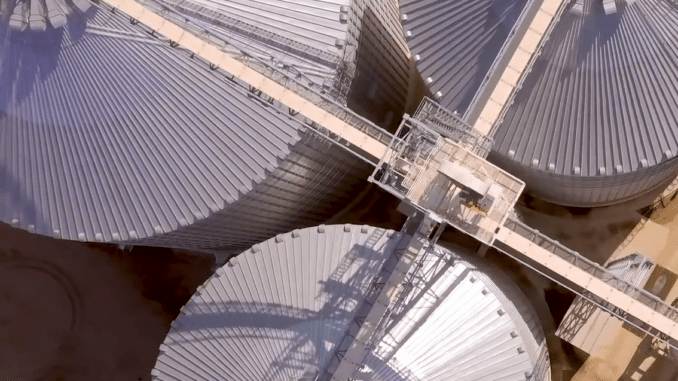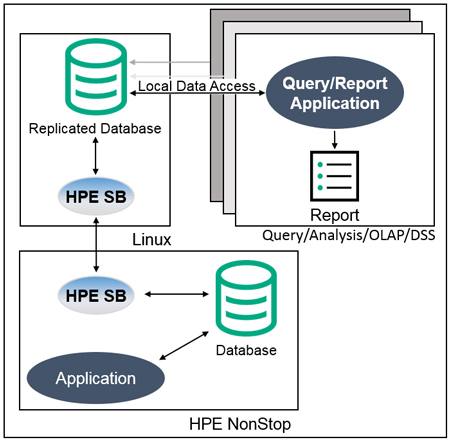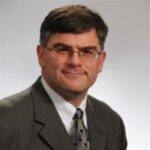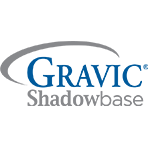
The Manufacturer’s Trapped Data
A large European steel tube manufacturer ran its online shop floor operations on an HPE NonStop Server. To exploit the currency and value of this online, trapped, and siloed data, the manufacturer periodically generated reports on Linux Servers using a customized application and connectivity tool that remotely queries the online NonStop Enscribe database and returns the results (Figure 1).
With this original architecture, every time a Linux query/report was run, processing on the NonStop Server was required, and as query activity increases, this workload started to significantly impact online shop floor processing. This impact was compounded due to the high volume of data transformation and cleansing required for converting the Enscribe data into a usable format for the reports. Periodically, the company needed to suspend the execution of reports due to these production impacts. In addition, the remote connectivity architecture was not very robust or scalable, and was also susceptible to network failures, timeouts, and slowdowns when operating at full capacity. Since the data adapter used was nonstandard, the manufacturer could not access the data using standard ODBC and OLAP1 tools to take advantage of new analytical techniques (such as DSS2 ). Furthermore, the company had a new requirement to share the OLAP analysis with the online NonStop applications in order to optimize shop floor control, which was completely impossible with the original solution. Therefore, a new architecture was required to address these issues and meet the new requirements.
 Figure 1 – Original Remote Query Architecture
Figure 1 – Original Remote Query Architecture
Rearchitecting Operations
The manufacturer completely rearchitected its Linux-based querying/reporting application. Rather than remotely querying the NonStop Enscribe data each time a report is run, the data is replicated by HPE Shadowbase software in real-time from the Enscribe database to a copy of that database hosted on a Linux system. This architectural change only requires the data to be sent across the network once (when it is changed), instead of every time a query/report is run.
The raw Enscribe data is non-normalized, and full of arrays, redefines, and data types that do not have a matching relational data construct (e.g., SQL data type). As part of the replication process, the non-relational Enscribe data is transformed and cleansed by HPE Shadowbase software into a relational format, and written to an Oracle RAC database. This architectural change only requires the data to be cleansed and/or normalized once when the data is changed, rather than every time a query/report is run.
Since the data is now local to the Linux Servers and presented in standard relational format, it is possible to use standardized SQL data query and analysis tools (Figure 2). The benefit of achieving this level of integration cannot be overstated; the customer now has the full power provided by the analytical tools market to manipulate its raw information to achieve data intelligence.
In addition, HPE Shadowbase software allows the manufacturer to reverse replicate the OLAP results and share those results back with the NonStop applications to better optimize the shop floor manufacturing process. This integration dramatically improves shop floor control operations and avoids having to architect yet another interface.
 Figure 2 – The Manufacturer’s New Architecture Featuring Local Database Access
Figure 2 – The Manufacturer’s New Architecture Featuring Local Database Access
Key Project Benefits
This new architecture completely resolves the issues with the old mechanism by decoupling the data access and transformation/cleansing process from the querying/reporting process, and by presenting the data locally on the Linux system in standard relational format:
- Querying/reporting and data transformation/cleansing impact on the production NonStop system is eliminated. Online data replication has much lower overhead than executing queries and performing data transformation/cleansing directly on the NonStop Enscribe database every time a query is executed. This architecture dramatically reduces the workload on the NonStop Server, avoids throughput and response time issues with the shop floor applications, and eliminates the periodic need to suspend running reports.
- Querying/reporting performance is dramatically improved. It is much faster to run queries and reports against an already transformed/cleansed local relational database using standard ODBC access, than it is to remotely access the NonStop Enscribe database and spontaneously perform the necessary data transformation/cleansing every time a query or report is executed.
- Querying/reporting application availability is improved. A local Linux copy of the database is used so that an outage of a network or a NonStop Server will not impact the querying/reporting applications.
- The shop floor application’s scalability is improved. A local database access is inherently more scalable than executing remote queries across a network, especially when removing the need for data transformation/cleansing on every query. Competition for resources on the NonStop Server is also greatly reduced by offloading workload to the Linux systems. In addition, the original architecture typically only allowed a single report to run at any one time (to minimize the impact on the NonStop production system). Now, with the data hosted on a Linux Oracle RAC database and the NonStop system out of the query loop, multiple reports and advanced analytics can be executed in parallel.
- Analytics and data value are improved. Transforming and cleansing the Enscribe data into relational format and storing it in a local relational database enables the use of standard ODBC database access. It also enables additional off-the-shelf querying/reporting tools to extract even more value from the data (including OLAP and DSS). The ability to share the OLAP analysis with the NonStop production applications using Shadowbase bi-directional data integration enables new uses for the data (in this case, to better optimize the shop floor manufacturing process).
Summary
This case study only scratches the surface of data replication’s potential. It can:
- Integrate disparate applications, such as an online production shop floor application with a reporting application.
- Eliminate data silos by exposing valuable data and enables the creation of new business processes.
- Distribute data wherever it is needed with low overhead while it transforms and cleanses that data.
- Distribute data where it can easily be consumed by other applications (typically without requiring any application changes).
- And much, much more. 3
Data replication is not only for providing backups for business continuity, but also for moving data in real-time as required in order to leverage its value wherever needed. Think about where you have valuable, yet isolated, data and consider how you could use data replication to unlock this value for competitive advantage and to build new solutions for your business.
Please See the Related Case Study Below
Two Options for Eliminating Trapped, Siloed Enscribe Data:
Off-platform vs On-platform Data Integration
This case study describes the solution chosen by the customer known as “off-platform” data integration, where Shadowbase software is used to transform and replicate the trapped and siloed source data (HPE NonStop Enscribe) into the desired target data structure (SQL), and apply it into a remote (off-platform) target platform and database (Linux/Oracle).
An alternate approach, known as “on-platform” data integration, can also be considered (see Figure 3).
 Figure 3 – On-platform Data Integration
Figure 3 – On-platform Data Integration
In this approach, Shadowbase software is used to transform and replicate the source data into the desired target structure and apply it into a “local” (on-platform) target database (either NonStop SQL/MP or SQL/MX). Remote applications can then use standard ODBC or JDBC query tools to remotely access the data in the SQL/MP or SQL/MX database (e.g., via ODBC/MX).
The on-platform architecture is very similar to the original architecture employed by the customer – only the remote query application client library would have to change – which can be very advantageous if the customer cannot easily accommodate or manage off-platform systems (e.g., Linux, Windows, Unix) and databases (e.g., Oracle, SQL Server, Db2®). Additionally, keeping the database on the NonStop Server provides all of its inherent fault-tolerant availability benefits, including its unequaled NonStop SQL database query capabilities (e.g., provided by SQL/MX). Of course, when adding additional processing to the existing system, a sizing and performance analysis should also be performed to ensure that the system capacity is adequate (otherwise, additional CPU or disk may be needed).
In this case study, the customer chose to use Shadowbase off-platform data integration capabilities in order to take advantage of additional tools, and to integrate with additional utilities available for the Oracle database (e.g., OLAP and DSS).
1Online Analytical Processing (OLAP) is the technology behind many Business Intelligence (BI) applications. OLAP is a powerful technology for data discovery, including capabilities for limitless report viewing, complex analytical calculations, and predictive “what if” scenario (budget, forecast) planning.
2A Decision Support System (DSS) is a computerized information system used to support decision-making in an organization or a business. A DSS lets users sift through and analyze massive reams of data and compile information that can be used to solve problems and make better decisions.
3For more information, please see the Gravic white papers, HPE Shadowbase Streams for Data Integration and HPE Shadowbase Streams for Application Integration.
Copyright and Trademark Information
This document is Copyright © 2019, 2020 by Gravic, Inc. Gravic, Shadowbase and Total Replication Solutions are registered trademarks of Gravic, Inc. All other brand and product names are the trademarks or registered trademarks of their respective owners. Specifications subject to change without notice.
About the authors

Keith B. Evans
Shadowbase Product Management
Gravic, Inc.
Keith B. Evans works in Shadowbase Product Management. Mr. Evans earned a BSc (Honors) in Combined Sciences from DeMontfort University, England. He began his professional life as a software engineer at IBM UK Laboratories, developing the CICS application server. He then moved to Digital Equipment Corporation as a pre-sales specialist. In 1988, he emigrated to the U.S. and took a position at Amdahl in Silicon Valley as a software architect, working on transaction processing middleware. In 1992, Mr. Evans joined Tandem and was the lead architect for its open TP application server program (NonStop Tuxedo). After the Tandem mergers, he became a Distinguished Technologist with HP NonStop Enterprise Division (NED) and was involved with the continuing development of middleware application infrastructures. In 2006, he moved into a Product Manager position at NED, responsible for middleware and business continuity software. Mr. Evans joined the Shadowbase Products Group in 2012, working to develop the HPE and Gravic partnership, internal processes, marketing communications, and the Shadowbase product roadmap (in response to business and customer requirements).

Paul J. Holenstein
Executive Vice President
Gravic, Inc.
Mr. Holenstein has direct responsibility for the Gravic, Inc. Shadowbase Products Group and is a Senior Fellow at Gravic Labs, the company’s intellectual property group. He has previously held various positions in technology consulting companies, from software engineer through technical management to business development, beginning his career as a Tandem (HPE NonStop) developer in 1980. His technical areas of expertise include high availability designs and architectures, data replication technologies, heterogeneous application and data integration, and communications and performance analysis. Mr. Holenstein holds many patents in the field of data replication and synchronization, writes extensively on high and continuous availability topics, and co-authored Breaking the Availability Barrier, a three-volume book series. He received a Bachelor of Science degree in computer engineering (BSCE) from Bucknell University, a Masters in Computer Science (MSCS) from Villanova University, and is an HPE Master Accredited Systems Engineer (MASE).


Be the first to comment